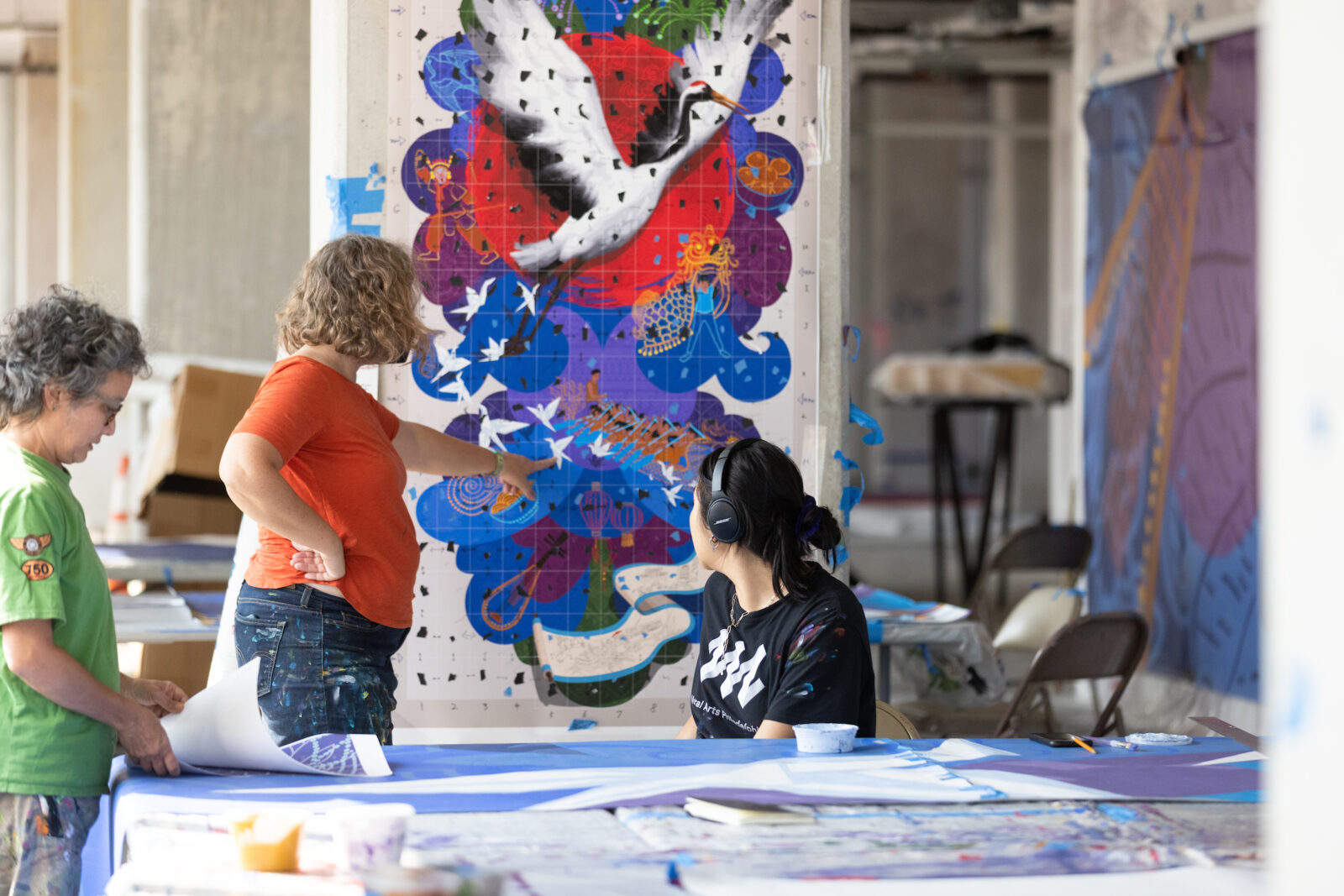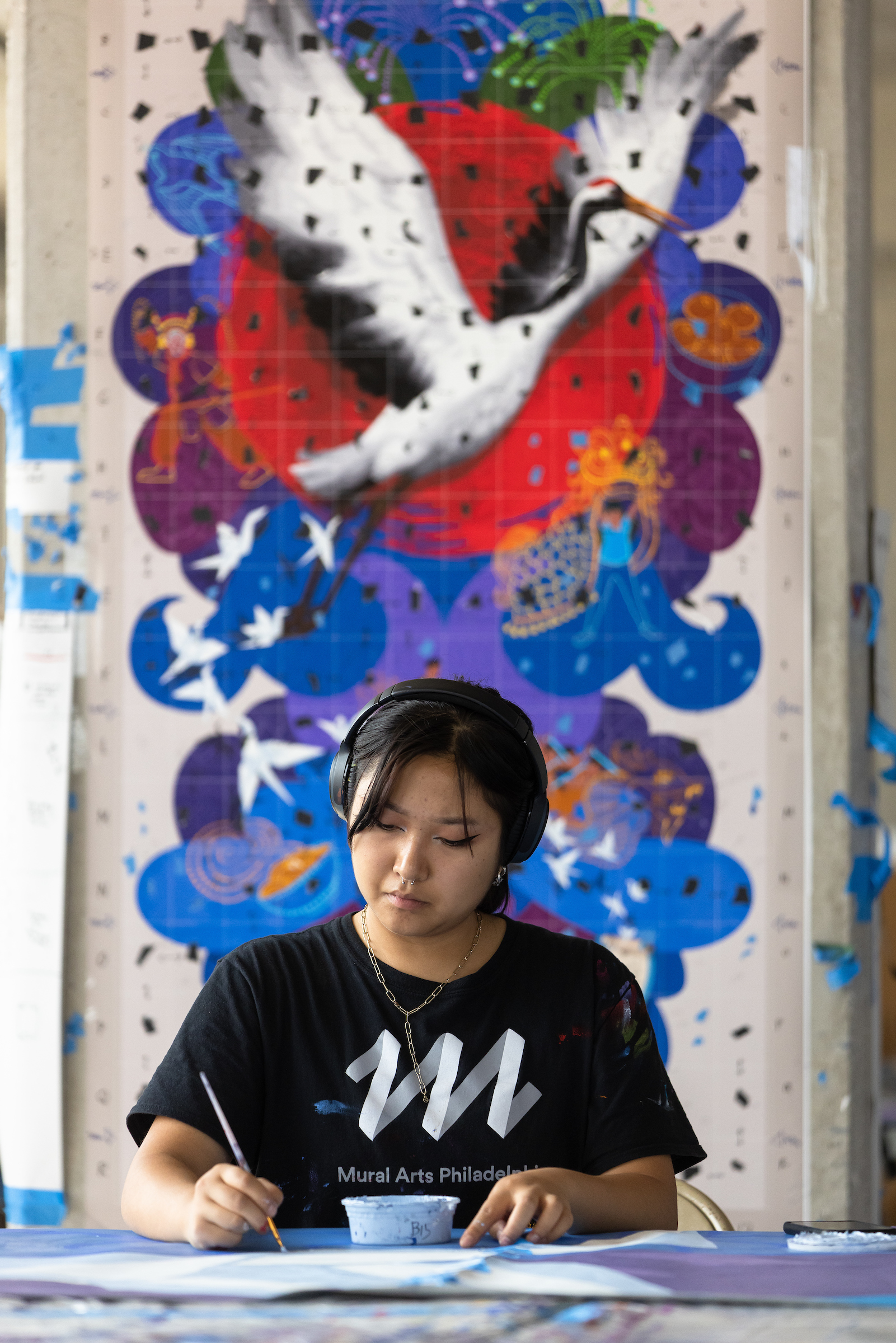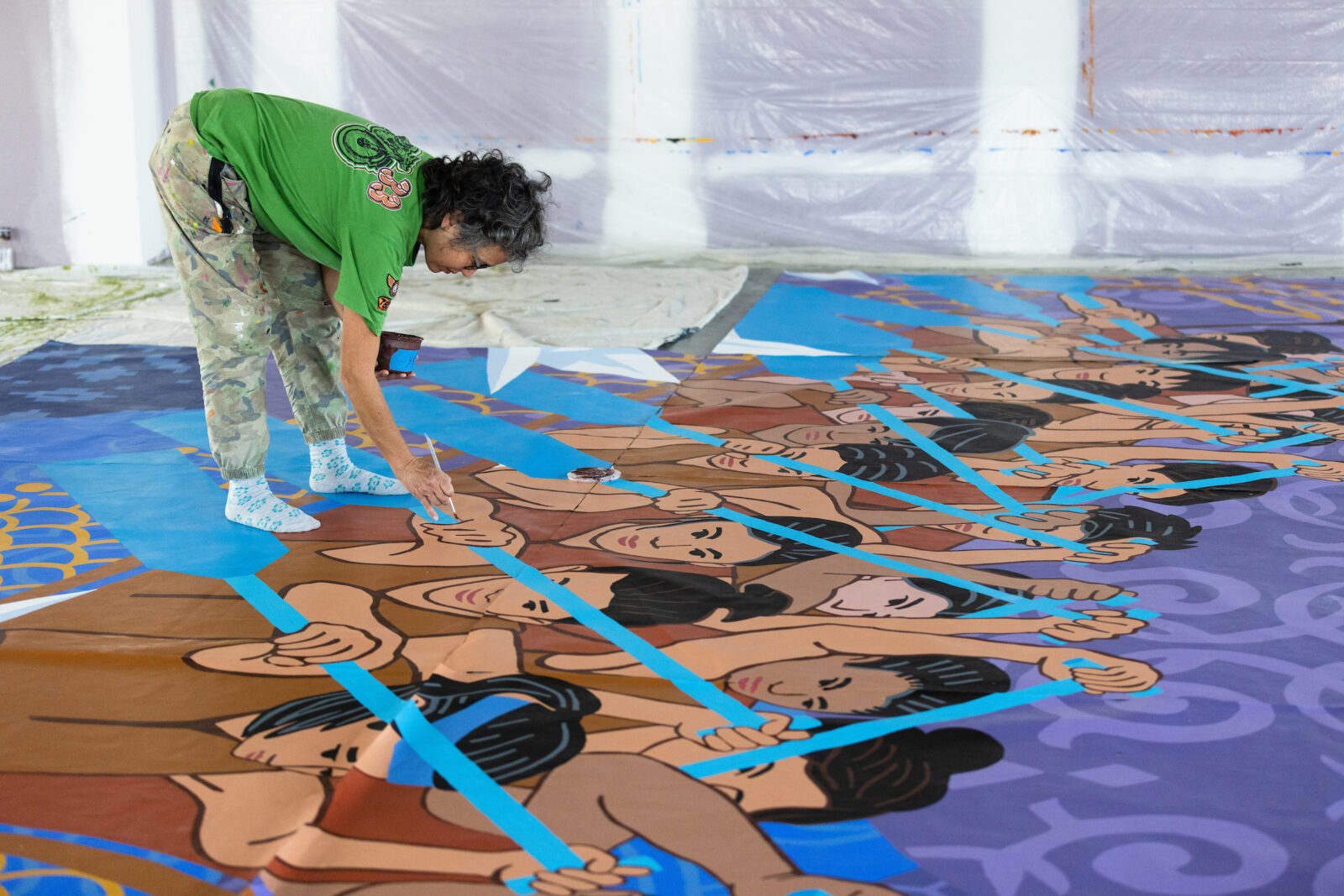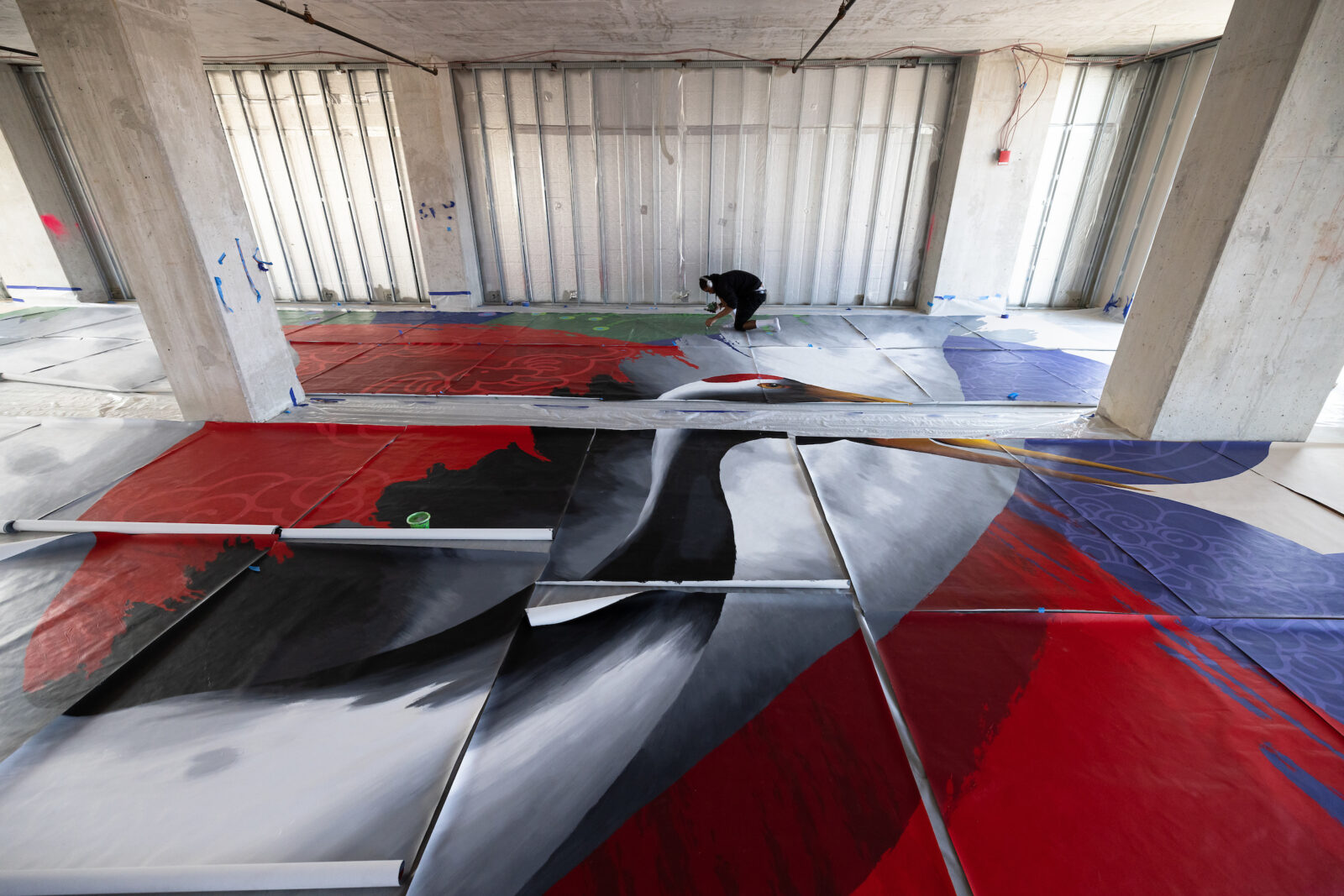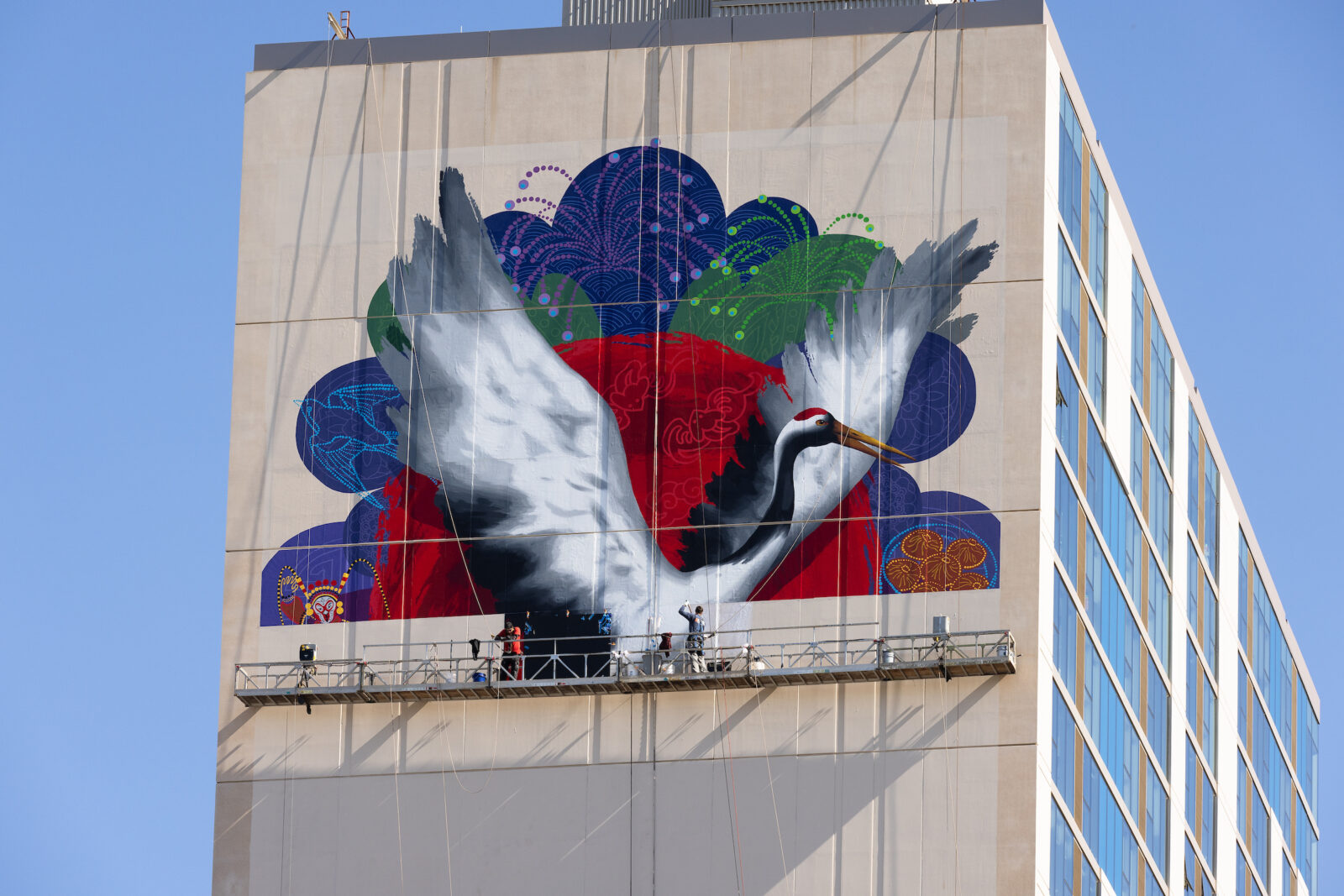承前啓後 – The Past Supporting the Future
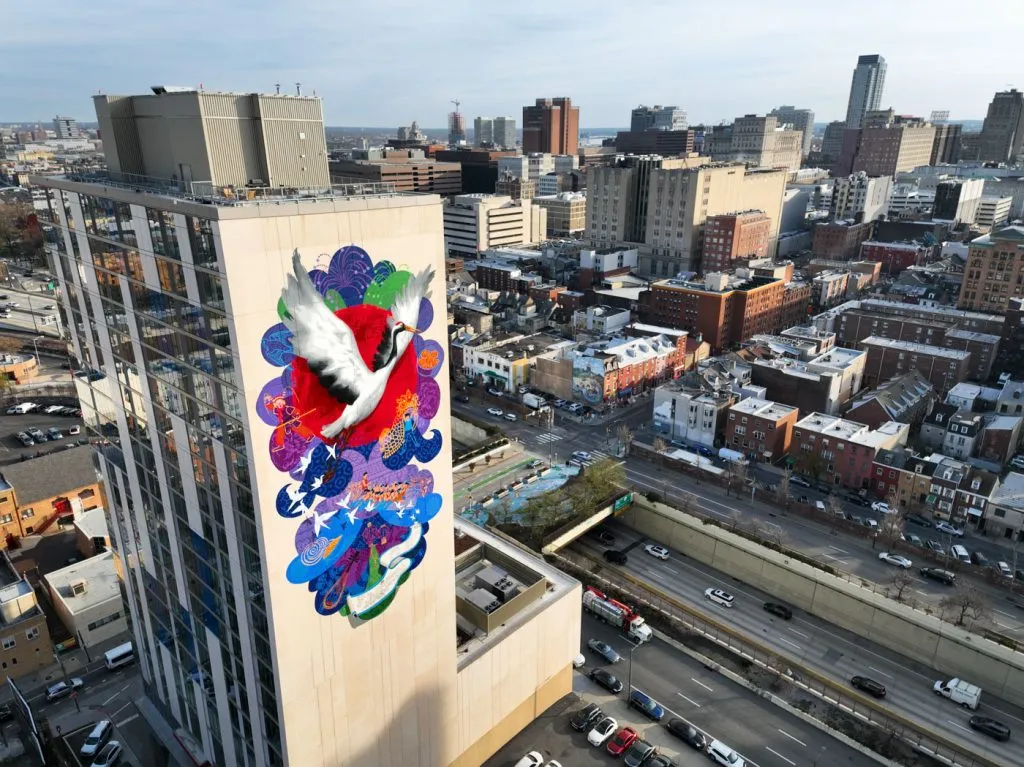
What is your story of migration? What makes Chinatown special? What is your vision for the future? These questions were posed by artists from Mural Arts Philadelphia to the Chinatown and AAPI communities in the Philadelphia region.
The answers inspired 承前啓後 – The Past Supporting the Future, a mural that covers the upper half of the west wall of the 21-story Crane Community Center. The towering work – by Asian artists Eurhi Jones, Chenlin Cai, and Yvonne Lung – is hard to miss, clearly visible to those passing on I-676.
“It’s a tremendous piece. I think it will become iconic,” said Lindsey Rosenberg, who managed the project for Mural Arts Philadelphia. “This was a true community effort.”
The murals for Crane Chinatown are commissioned by the Philadelphia Chinatown Development Corporation as part of the Philadelphia Redevelopment Authority’s Percent for Art Program, in partnership with Mural Arts Philadelphia and the Philadelphia Housing Development Corporation (PHDC), and have been three years in the making. A second interior artwork is still being finalized. Soon after the artists were chosen, COVID-19 hit. During the height of the pandemic, when many Chinatown businesses were closed because of the economic slump and the prevailing anti-Asian sentiment, it was especially important for the artist team to reach out to the community and ask them to tell their stories of migration, adaptation, and hope for their future. Pandemic restrictions meant in-person outreach was not an option, and the artists had to be creative with inventing virtual workshops to reach various communities. Inter-generational oral history workshops were held virtually to gather stories of migration. Later, the artists also held a mix of virtual and in-person art workshops, all of which helped inspire the final design.
Chenlin Cai, one of the mural’s lead artists, said the design is rich with symbolism, including real and paper cranes, that will speak to different segments of the Asian American community while also showcasing the friendship and unity between different Asian countries.
Cai, a native of China who came to the US to complete an MFA at PAFA, was partly inspired by the history of the Crane building. Completed in 2019, the building is located north of the Vine Street Expressway, the development of which divided Chinatown into north and south sections. It took eight years to complete and symbolizes the community’s attempt to reclaim their land and reunite their neighborhood.
The new mural features small paper cranes flying upwards, which transform into a large living crane poised to take flight. That represents the neighborhood’s growth and its bright future.
Other images include traditional lanterns, which bring luck and protection; someone preparing for the Chinese Lion Dance, an indicator of good fortune; and a pipa, a stringed instrument that originated in China and has been in use for almost 2,000 years. The pipa is also popular in other East and Southeast Asian countries and is an example of one of the many cultural bonds between these nations.
Painting began in the summer of 2022, with the help of over 100 volunteers of all ages from the Chinatown community and other AAPI organizations, as well as a team of Mural Arts Interns.
Chinatown, Center City’s only remaining neighborhood of color, is 152 years old. Community members have been fighting off outside encroachments for at least half of that time. While protesters couldn’t stop the creation of the Vine Street Expressway or the Pennsylvania Convention Center, they did convince developers to preserve a historic church in one case and secure a new row home complex in the other. Over the years, the community has successfully fought off attempts to shackle the neighborhood with a prison, a baseball stadium, and a casino. The latest threat is a proposed basketball stadium for the 76ers.
The 54-foot tall Crane is the dominant image of the mural, a symbol of longevity looking into the future of Chinatown and the AAPI community. It rises on a pathway of paper cranes that emanate from a history scroll showing important events in Chinatown’s past; the original protest against the highway that galvanized the community, the creation of the Friendship Gate, and the completion of the Crane Community Center).
Surrounding the giant crane are images of contemporary Chinatown, a dragon boat team, a young girl performing the lion dance, a traditional Pipa stringed instrument, the Monkey King, a popular figure from Chinese opera, a swallow, representing migration, and some of the delicacies that make the area a dining destination.
The background is composed of peony petals embossed with textile patterns reflecting some of the many AAPI cultures of Philadelphia: Japan, India, Korea, China, Vietnam, Indonesia, Thailand, Myanmar, Laos, Cambodia, Tibet, Bhutan, and the Philippines.
To see more images of this mural, visit @phillychinatowncranemurals on Instagram.
